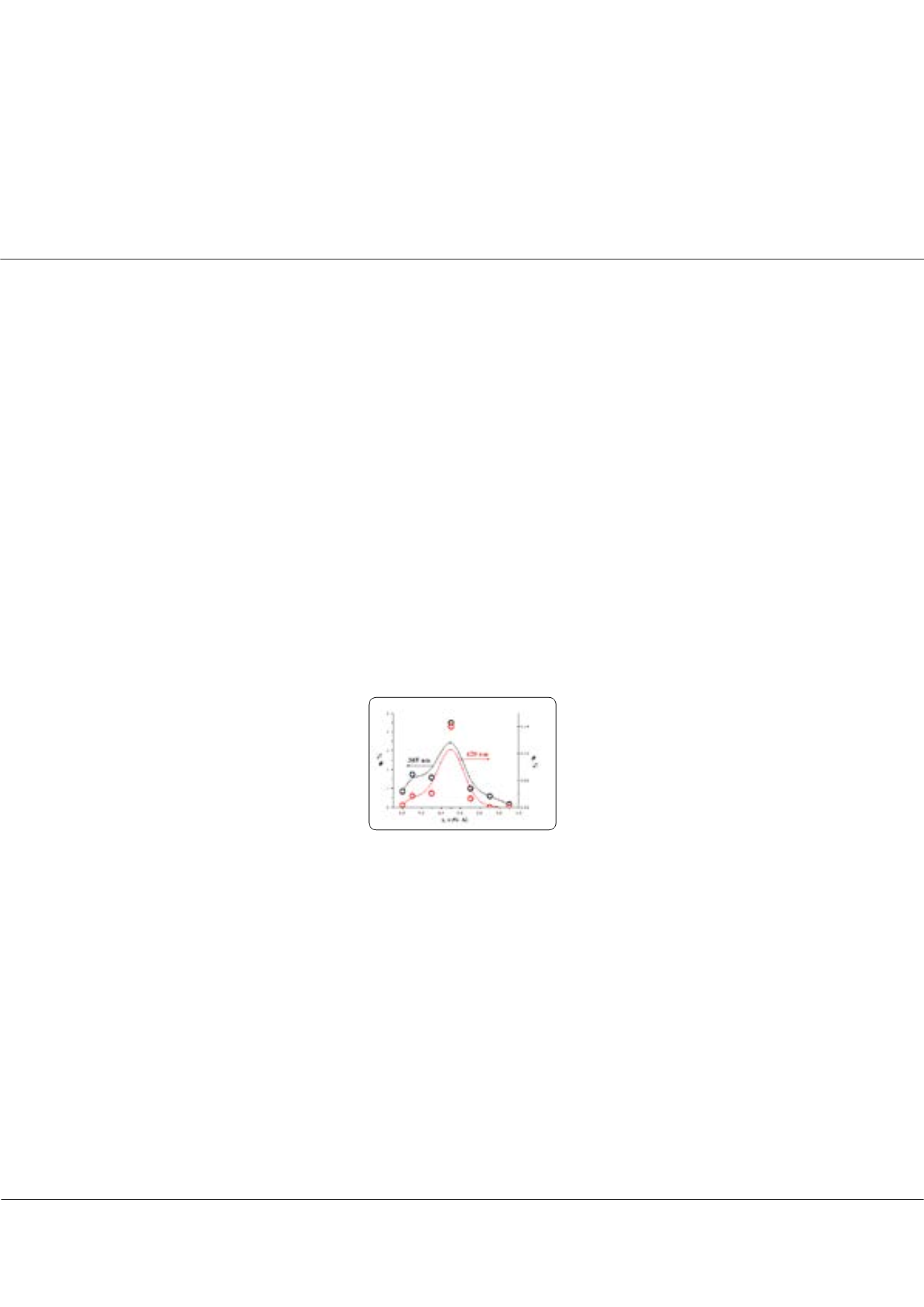

Page 99
conferenceseries
.com
Volume 7
Biosensors Journal
ISSN: 2090-4967
Electrochemistry 2018
June 11-12, 2018
June 11-12, 2018 | Rome, Italy
4
th
International Conference on
Electrochemistry
Influence of the dopant concentration on photoelectrochemical behavior of Al-doped TiO
2
Anna A Murashkina
and
Alexei V Emeline
Saint Petersburg State University, Russia
T
itanium dioxide is the most extensively studied photoactive material since the discovery of water photo-assisted electrolysis
with titanium dioxide photo-anode. Materials based on titanium dioxide can be used in photocatalytic systems for
water and air purification, formation of self-cleaning and antibacterial coatings, in solar cells and sensors. Titanium dioxide
possesses a sufficiently high photochemical (photocatalytic) activity, good chemical stability and non-toxicity and low cost
of its production. In the present study we explored the effect of Al dopant concentration within the range <1.1 wt.% on
the photoelectrochemical activity of Al doped TiO
2
photo-anode. The experimental dependencies of photoelectrochemical
efficiency on Al dopant concentration indicate that there is an optimal Al concentration 0.5 wt.% corresponding to the highest
photo-activity. The analysis of the spectral dependencies of the photocurrent confirms that 0.5 wt.% of Al provides the highest
activity at photoexcitation in both intrinsic and extrinsic absorption spectral range. It was also shown that Al doping does not
affect the optical band gap of TiO
2
. The dependence of photoelectrochemical activity on Al concentration correlates with the
corresponding dependencies of the flat band potential and work function indicating the shift of the Fermi level toward the
conduction band for the Al concentration <0.5 wt.% and toward the valence band for the Al concentration >0.5 wt.%. Such
alteration of the Fermi level position is explained in terms of alteration of the type of major compensating intrinsic defects
for Al concentration <0.5 wt.% acting as shallow traps, to Al concentration >0.5 wt.% acting as deep traps. Transformation
of compensating defects from shallow traps which are ineffective in charge recombination processes to deep traps which
act as effective recombination centers is responsible for the optimal dopant concentration, 0.5 wt.%, to achieve the higher
photoelectrochemical activity of Al-doped TiO
2
.
Figure 1:
The dependence of IPCE on Al-dopant concentration at 365 and 420 nm.
Recent Publications:
1. Nakata K, Ochiai T, Murakami T and Fujishima A (2012) Photoenergy conversion with TiO
2
photocatalysis: New
materials and recent applications. Electrochimica Acta 84:103-111.
2. Fujishima A, Zhang X and Tryk D A (2008) TiO
2
photocatalysis and related surface phenomena. Surf. Sci. Rep. 63:516-
582.
3. Henderson M A (2011) A surface science perspective on TiO
2
photocatalysis. Surface Science Reports 66:185-29.
4. Robertson P, Robertson J and Bahnemann D (2012) Removal of microorganisms and their chemical metabolites from
water using semiconductor photocatalysis. Journal of Hazardous Materials 211– 212:161–173.
5. Asahi R, Morikawa T, Ohwaki T, Aoki K and Taga Y (2001) Visible-light photocatalysis in nitrogen-doped titanium
oxides. Science 293:269-271.
Biography
Anna AMurashkina has her expertise in the development and investigation of semiconductors for the solar energy conversion into the chemical energy. These semiconductor
materials can be used in photocatalytic systems for water and air purification, formation of self-cleaning and antibacterial coatings, in solar cells and sensors.
murashkinaaa@mail.ruAnna A Murashkina et al., Biosens J 2018, Volume 7
DOI: 10.4172/2090-4967-C1-003
















